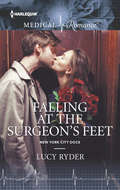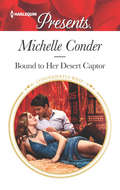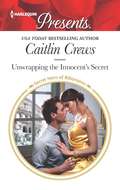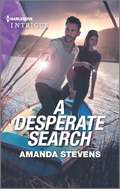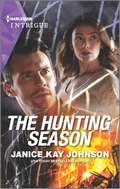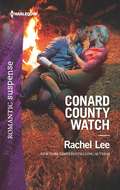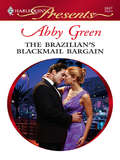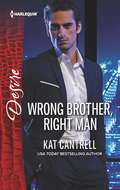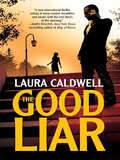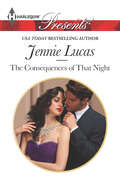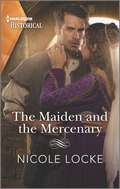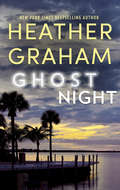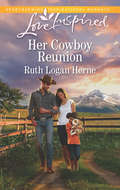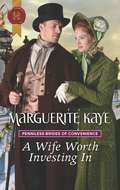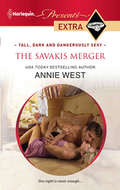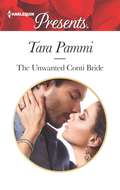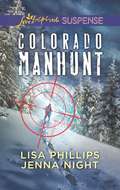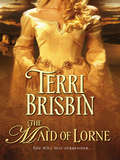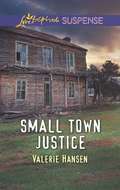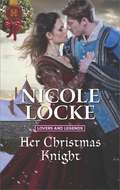- Table View
- List View
Falling at the Surgeon's Feet: Falling At The Surgeon's Feet Daredevil, Doctor... Husband? Reunited... In Paris! (New York City Docs #3)
by Lucy RyderIt started in an elevator... After a traumatic accident, Dr. Holly Buchanan made a plan: become the world's best plastic and reconstruction surgeon. What wasn't in her plan? Tumbling into an elevator and sprawling at the feet of sinfully sexy new colleague Dr. Gabriel Alexander! For Gabe, getting involved with someone from Manhattan's social elite can only lead to heartbreak. But he's intrigued by Holly's shy charm and intelligent passion. And with Holly bumping into him with every turn she takes, he won't be able to resist her sizzling touch forever!
Bound to Her Desert Captor: His Million-dollar Marriage Proposal (the Powerful Di Fiore Tycoons, Book 2) / Bound To Her Desert Captor (Conveniently Wed! #7)
by Michelle ConderCaptive to the sheikh…Seduced by his touch!Certain that Regan James has information on his sister’s disappearance, Sheikh Jaeger steals her away to his palace. He doesn’t expect compliance from his beautiful captive, but when defiant Regan accidentally causes a media storm, it must be resolved. How? He’ll have to marry her! Their engagement is for appearances, but the electricity sparked by their passion feels exquisitely—dangerously—real…
Unwrapping the Innocent's Secret (Secret Heirs of Billionaires #30)
by Caitlin CrewsTheir desire haunts him…Will her revelation reunite them?Billionaire Pascal prides himself on his rigid control. So it infuriates him beyond belief that he can’t forget Cecilia, the sweet and innocent woman who saved his life…or the forbidden passion they shared. This Christmas, he’s determined to forget her—until they suddenly come face-to-face!Seeing Pascal again blindsides Cecilia. She gave him more than her innocence during their explosive encounter—she gave him a piece of her heart. Their still-searing chemistry is startling! As is Cecilia’s stunning baby secret…
A Desperate Search (An Echo Lake Novel #2)
by Amanda StevensSomething strange is going on at Echo Lake.Detective Adam Thayer is devastated when he arrives too late to save his friend who had called for help. But a series of obscure clues brings Adam to coroner Nikki Dresden, who’s eager to determine if one of the town’s most beloved citizens was murdered. Now they must work together to unravel a deadly web of lies and greed…or die trying. From Harlequin Intrigue: Seek thrills. Solve crimes. Justice served.For more action-packed stories, check out the other books in the An Echo Lake Novel series by Amanda Stevens :Book 1: Without a TraceBook 2: A Desperate SearchBook 3: Someone Is Watching
Claiming His Replacement Queen: Shock Heir For The King Untouched Until Her Ultra-rich Husband Claiming His Replacement Queen Reunited By The Greek's Vows (Monteverre Marriages #2)
by Amanda CinelliStepping into the spotlight…As the desert king’s queen!Khalil’s motivation for marriage is politics, not passion. So when his intended bride marries for love and her sister, shy Princess Cressida, agrees to take her place, Khal travels to London to retrieve his replacement queen! Yet their sizzling encounter changes everything. Since losing his first wife, Khal keeps all emotion on lockdown, but the desire innocent Cressida ignites is too hot to resist…Lose yourself in this seductive royal romance…
The Hunting Season
by Janice Kay JohnsonShe’d faced dangerous situations before…She had no idea what was still to come.Lindsay Engle became a CPS social worker to improve lives—not get people killed. But after a horrifying string of murders connected to Lindsay’s caseload, Detective Daniel Deperro will do whatever it takes to find the murderer. Lindsay won’t back down from the investigation, even as Daniel fears she’s the next target. But will his twenty-four-hour protection enrage the serial killer further—or expose Daniel’s true feelings for Lindsay?USA TODAY Bestselling Author
Conard County Watch: Colton's Twin Secrets (the Coltons Of Red Ridge) / Conard County Watch (conard County: The Next Generation) (Conard County: The Next Generation #39)
by Rachel LeeOne marine meets his match on Thunder Mountain A thrilling Conard County: The Next Generation romanceArchaeologist Renee Dubois is used to digging up the past, not falling headlong into intrigues of the present. But trouble comes her way when she meets former marine Carter Copeland, whose cool-and-collected demeanor contrasts with his lethally sexy looks. As Carter and Renee stumble across a deadly secret, they must race against time to survive.
An Innocent, A Seduction, A Secret: An Emotional and Sensual Romance (One Night With Consequences #48)
by Abby GreenThe virgin’s Christmas surrender…And a life-changing consequence!When brooding Argentinean Seb Rivas spies elfin Edie Munroe’s talent for lavish interior decoration, he makes an irresistible job offer—to spend the festive season decorating his opulent home, no expense spared! Their desire flares hotly and, snowed in together, Edie becomes the sensual gift Seb wishes to unwrap. But in taking her innocence, neither realizes their overwhelming passion could have such shocking results…Indulge in this intense pregnancy romance!
The Brazilian's Blackmail Bargain (Bedded by Blackmail #7)
by Abby GreenSix months ago Brazilian tycoonCaleb Cameron thought he'd uncoveredMaggie Holland's plot to ruin him-usingseduction! But Maggie was being manipulatedby her stepfather. She'd fallen in love withCaleb-but he vowed never to see her again.After her stepfather dies, Maggie is left withnothing. Now, to complete his revenge, Calebmakes an offer Maggie can't refuse: but shemust become his mistress for two months!
Wrong Brother, Right Man: Reunited... With Baby (texas Cattleman's Club: The Impostor, Book 5) / Wrong Brother, Right Man (switching Places, Book 1) (Switching Places #1)
by Kat CantrellUSA TODAY Bestselling AuthorWith a half-billion dollars at stake, this playboy needs a plan.Hiring his brother’s ex is just the start.To earn his inheritance, Valentino LeBlanc must switch jobs with his twin, or so says his father’s will. Val vows to succeed at any cost, but to win, he needs Sabrina Corbin—his brother’s beautiful ex and consultant extraordinaire. Their chemistry is combustible and undeniable…and soon a pregnancy surprise may raise the stakes even higher…
The Good Liar
by Laura CaldwellKate Livingston and Liza Kingsley have been best friends since their childhood in the suburbs of Chicago. They know everything about each other. Or do they?When Liza sets up the newly divorced Kate with Michael Waller, an elegant man sixteen years her senior, neither woman expects Kate to fall for him so soon. The relationship is a whirlwind that enthralls Kate...and frightens Liza. Because Liza knows she may have introduced Kate to more than her dream man; she may have unwittingly introduced her to a dangerous world of secrets.And yet Kate marries Michael and follows him to a French-Canadian town called St. Marabel, where she begins to suspect that Michael isn't exactly who he seems. As each new suspicion arises, Kate finds herself investigating her husband, but what she doesn't know is that she's about to steer her friendship with Liza on a collision course that will race from the U.S. to Russia and from Canada to Brazil, and the betrayals she uncovers could cause the end of all of them.
The Consequences of That Night (At His Service #3187)
by Jennie LucasAn indecent indiscretion! Emma Hayes has gone from making hotel magnate Cesare Falconeri's bed to running his household, including handing out expensive parting gifts to his numerous conquests! But each time, it's chipped away at her heart. Until one night, inhibitions lowered, she reaches for what she's always wanted.... With one disastrous marriage behind him Cesare vows never to go there again. But when his indiscretion with Emma has consequences, Cesare must break his own vow-and say I do for the sake of his heir. Now he'll expect his new bride to share his bed, instead of making it!
The Maiden and the Mercenary (Lovers and Legends #10)
by Nicole LockeKeep your friends close…But your enemies closer?In order to find a legendary treasure map, mercenary Louve of Mei Solis must infiltrate his enemy’s fortress under the guise of a servant. There, Louve meets beautiful maiden Biedeluue, a fellow servant with her own hidden agenda…to save her sister from the malevolent lord’s clutches! Their high-stakes missions may be at odds with one another, but their attraction cannot be denied even in this most dangerous of situations…From Harlequin Historical: Your romantic escape to the past. Lovers and LegendsA clash of Celtic passionsBook 1: The Knight’s Broken PromiseBook 2: Her Enemy HighlanderBook 3: The Highland Laird’s BrideBook 4: In Debt to the Enemy LordBook 5: The Knight’s Scarred MaidenBook 6: Her Christmas KnightBook 7: Reclaimed by the KnightBook 8: Her Dark Knight’s RedemptionBook 9: Captured by Her Enemy KnightBook 10: The Maiden and the Mercenary
Ghost Night: Ghost Memories Ghost Shadow Ghost Night Ghost Moon (The Bone Island Trilogy #1)
by Heather GrahamRediscover the Bone Island trilogy, a thrilling series of haunted suspense by New York Times bestselling author Heather Graham.A slasher movie turns real when two young actors are brutally murdered on a remote island film set. Their severed heads and arms are posed in macabre homage to a nineteenth-century pirate massacre.Two years later, survivor Vanessa Loren is drawn back to South Bimini by a documentary being made about the storied region. Filmmaker Sean O’Hara aches to see how the unsolved crime haunts her…and Sean knows more than a little about ghosts.Lured by visions of a spectral figurehead, Vanessa discovers authentic pirate treasures that only deepen the mystery. Are the murders the work of modern-day marauders, the Bermuda Triangle or a deadly paranormal echo of the island’s violent history? As Vanessa and Sean grow closer, the killer prepares to resume the slaughter…unless the dead can intervene.Originally published in 2010
Soldier Prince's Secret Baby Gift: A must-read Christmas romance to curl up with! (A Crown by Christmas #2)
by Kate HardyOne magical night……could ignite a royal scandal!In this A Crown by Christmas story, six months ago Tia Phillips and Prince Antonio of Casavalle shared one passionate night. Now she’s on the palace doorstep—pregnant with his baby! Another royal scandal is all Casavalle needs, so Antonio whisks Tia away to a secret hideaway. Soon Antonio’s falling for her, but will Tia accept his hand in marriage when she thinks he’s asking only out of duty?A Crown by Christmas trilogyBook 1 – Cinderella’s Prince Under the MistletoeBook 2 – Soldier Prince’s Secret Baby GiftLook out for the next book, coming soon:Book 3 – Their Christmas Royal Wedding“Ms. Hardy has written a very sweet novel…. She does great character development…this is a good heartstring novel that will have you embracing happiness in your heart.”—Harlequin Junkie on Christmas Bride for the Boss“His Shy Cinderella is a sweet romance that would make a reader sigh with bliss. Author Kate Hardy brought out the shimmering emotions in this story that would keep a reader hooked to the pages until the end. Highly recommended for all readers of romance.”—Goodreads
Her Cowboy Reunion (Shepherd's Crossing)
by Ruth Logan HerneA new life...an old love Can she risk loving him again in Shepherd’s Crossing?With her family in disgrace, Lizzie Fitzgerald never imagined she’d end up at an Idaho ranch. Fortunately, she’s working with horses she loves—even if it means dealing with her old sweetheart Heath Caufield. The widowed father of an adorable boy, Heath hasn’t forgiven Lizzie for their past. But even a stubborn cowboy can’t stop the heart’s ability to forgive...or love again.
A Wife Worth Investing In: A Regency Historical Romance (Penniless Brides of Convenience #2)
by Marguerite KayeA convenient proposal…Makes a scandalous match!Part of Penniless Brides of Convenience: Knocking on Owen Harrington’s door, impoverished and desperate Miss Phoebe Brannagh wonders if London’s most eligible catch will recognize her. But injured and reclusive, Owen is no longer a carefree man. And he’s in urgent need of a convenient wife! Owen’s shock proposal allows Phoebe to fulfill her life’s ambition to open a restaurant…but his heated kisses tempt her to hope for a new dream—marriage, for real!Penniless Brides of Convenient miniseriesBook 1 — The Earl’s Countess of ConvenienceBook 2 — A Wife Worth Investing InBook 3 and 4 — coming soon!“The book opens up like a succession of Russian dolls, revealing more and more about the protagonists in all guises. And this is Kaye’s strength as a writer: setting up a plot and characters shrouded in mystery, and then revealing them with increasing complexity as the story moves on … A book not to be missed.”— All About Romance on A Scandalous Winter Wedding“What a wonderful culmination A Scandalous Winter Wedding is to the Matches Made in Scandal series … Ms. Kaye has fast become one of my favorite authors of historical fiction”— Romance Junkies on A Scandalous Winter Wedding
The Savakis Merger (Tall, Dark and Dangerously Sexy #1)
by Annie WestOnly hours ago she was a wickedly tempting, sexy stranger. Now Damon Savakis knows who she really is-Callie Manolis, society ice-queen and duplicitous niece of his arch enemy.Yet when Callie's avaricious uncle loses the Manolis money, she becomes the bargaining chip in the Savakis merger! Damon is unprepared for her bravery, poise and purity in a world full of greed. Once she's paid her dues in his bed...he'll make her his willing bride for free!
In For Keeps: A Holiday Fling Romance (Tropical Heat #2)
by Taryn BelleKiki’s sexy one-night stand with rock god Dev Stone has become a red-hot affair with a lot of potential…until she discovers a secret that threatens to ruin everything.Kiki Becker moved to Moretta—a beautiful island and popular celebrity haunt—to escape a painful divorce. But after a scorching one-night stand with rock star Dev Stone almost becomes a sex scandal, she realizes she needs to face real life again. When Dev offers her a job as his tour assistant, Kiki leaps at the chance to go to Australia and find the mother who abandoned her decades ago.Dev can’t stop thinking about his electrifying night with Kiki, so he’s thrilled when she accepts. Their chemistry is irresistible, and the pair soon embark on a sexy no-strings affair—the perfect distraction from his tiresome celebrity life and all its trappings.Kiki realizes she’s falling for Dev and cautiously confides in him about her past, bringing the couple closer together. But Dev has his own dark secret and it could push Kiki away forever. Will he trust her with it…or walk away and break her heart before she can break his?The Tropical Heat series:In Too DeepIn For KeepsIntoxicatedStep into stories of provocative romance with Harlequin DARE, where sexual fantasies come true. Let your inhibitions run wild. Four new Harlequin DARE titles are available each month, wherever ebooks are sold!
The Unwanted Conti Bride: The Billionaire's Ruthless Affair Moretti's Marriage Command The Unwanted Conti Bride The Flaw In Raffaele's Revenge (The Legendary Conti Brothers)
by Tara Pammi"I want to marry you." If Sophia Rossi wants to save her father's business, then merging the Rossi and Conti empires is the only way. Luca Conti broke her heart once before, but this time Sophia's in the driver's seat. Except Luca can still make her body tremble with just a look! Luca has spent years cultivating his Conti Devil reputation to mask the darkness he inherited from his father, a facade that Sophia should be all too familiar with. Still, the shrewd businessman can see the benefits of her proposal... He might not want her as his bride, but he'll enjoy having her in his bed!
Colorado Manhunt: Wilderness Chase / Twin Pursuit (Mills And Boon Love Inspired Suspense Ser.)
by Lisa Phillips Jenna NightFugitives on the lam…And danger in the mountain wilderness.In Wilderness Chase by Lisa Phillips, US marshal Noah Trent will do anything to protect key witness Amy Sanders when the brother she testified against escapes from prison and comes after her in the Rocky Mountains. And in Jenna Night’s Twin Pursuit, bounty hunter Lauren Dillard must battle the mountain elements and trained killers when she mistakenly tracks her target’s twin brother, Jason Cortez.
The Maid of Lorne
by Terri BrisbinAs heiress to the MacDougall clan,Lara, Maid of Lorne, knows that when she marries itwill not be for love—but never dreams it will be used aspunishment. When Robert the Bruce takes control ofher castle home, Lara is forced to wed the Bruce's man,Sebastien of Cleish. Loyal to her clan, she vows she willnot surrender to this bold warrior.But beneath his chain mail and armor lies theheart of a chivalrous, brave knight willing to entice, towoo, to make Lara his true wife—in every way. Couldthe man who stole her virtue, her home andher family give her a future in his arms?
Small Town Justice: A Riveting Western Suspense
by Valerie HansenDANGEROUS SECRETS Back home in Serenity, Jamie Lynn Henderson's determined to prove her brother was framed for the town sheriff's hit-and-run death years ago. But as she encounters dead end after dead end, Jamie Lynn discovers someone will go to any lengths-even murder-to bury the evidence. Her only hope of staying alive long enough to uncover the truth is Shane Colton, the late lawman's wary son. Shane's world was shattered by one senseless act that he can't forgive. But somehow he is drawn to protect the lovely woman trying to free her brother from prison. If they don't work fast, Jamie Lynn's single-minded quest might lead them both into the killer's trap.
Her Christmas Knight: The Wallflower's Mistletoe Wedding Her Christmas Knight The Hired Man (Lovers and Legends #6)
by Nicole LockeA knight to protect her—this YuletideBy order of the English king, Alice of Swaffham searches London nobility for the traitor dealing information to the Scots. Little does she know that the mysterious spy she seeks is the man she once loved and thought she’d lost forever…If Hugh of Shoebury felt unworthy of Alice before, as the Half-Thistle spy he can never claim her heart. Now he must fight to keep not only his dark secrets—and Alice—safe from a vengeful king…but also his burning longing for her at bay!
A Lord for the Wallflower Widow (The Widows of Westram #1)
by Ann LethbridgeUntouched and alone…could he awaken her senses?Part of The Widows of Westram When widow Lady Carrie meets charming gadabout Lord Avery Gilmore, she is shocked by her intense reaction to him. She’s never before longed for wifely pleasures, and it takes all of her courage to propose that he show her them! He might be taken aback by her request, but as Carrie learns firsthand, this lord will take the challenge very seriously…The Widows of Westram miniseries Book 1 — A Lord for the Wallflower Widow Look out for the next story, coming soon!“Ann Lethbridge’s talent for penning deliciously naughty and smart love stories shines... A zippy, delightful read” — RT Book Reviews on Rescued by the Earl’s Vows“A charming, highly romantic story filled with engaging characters” — RT Book Reviews on An Innocent Maid for the Duke
